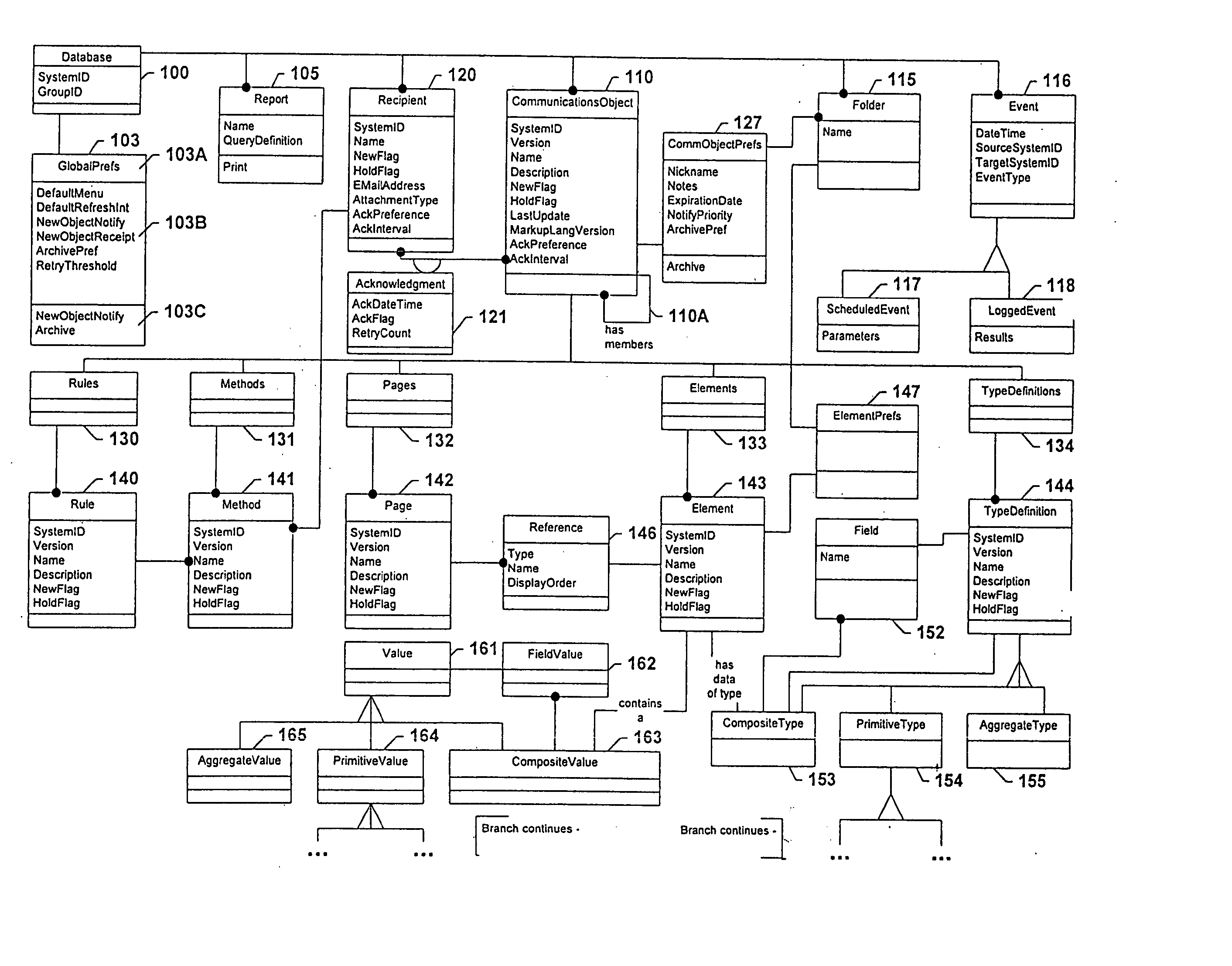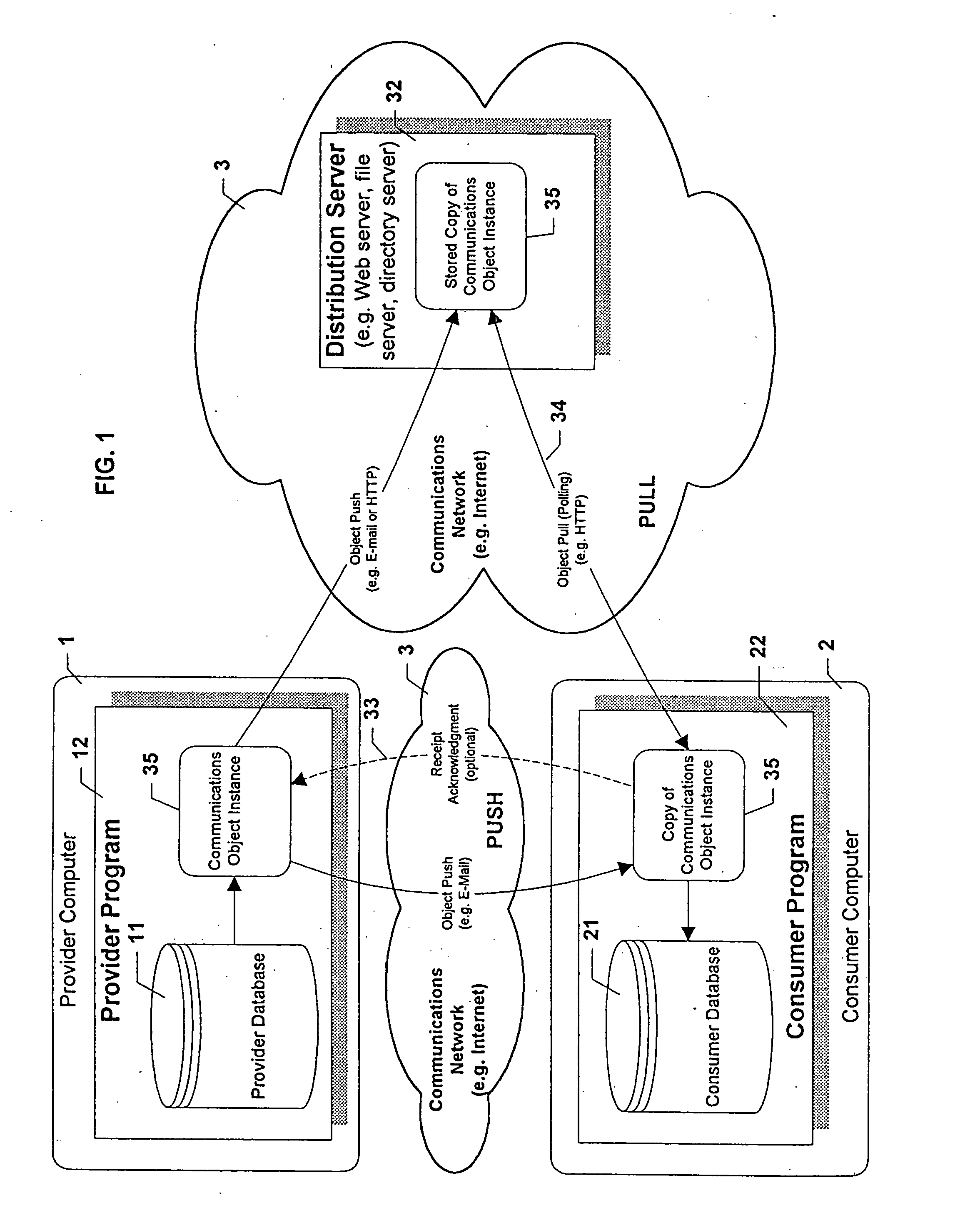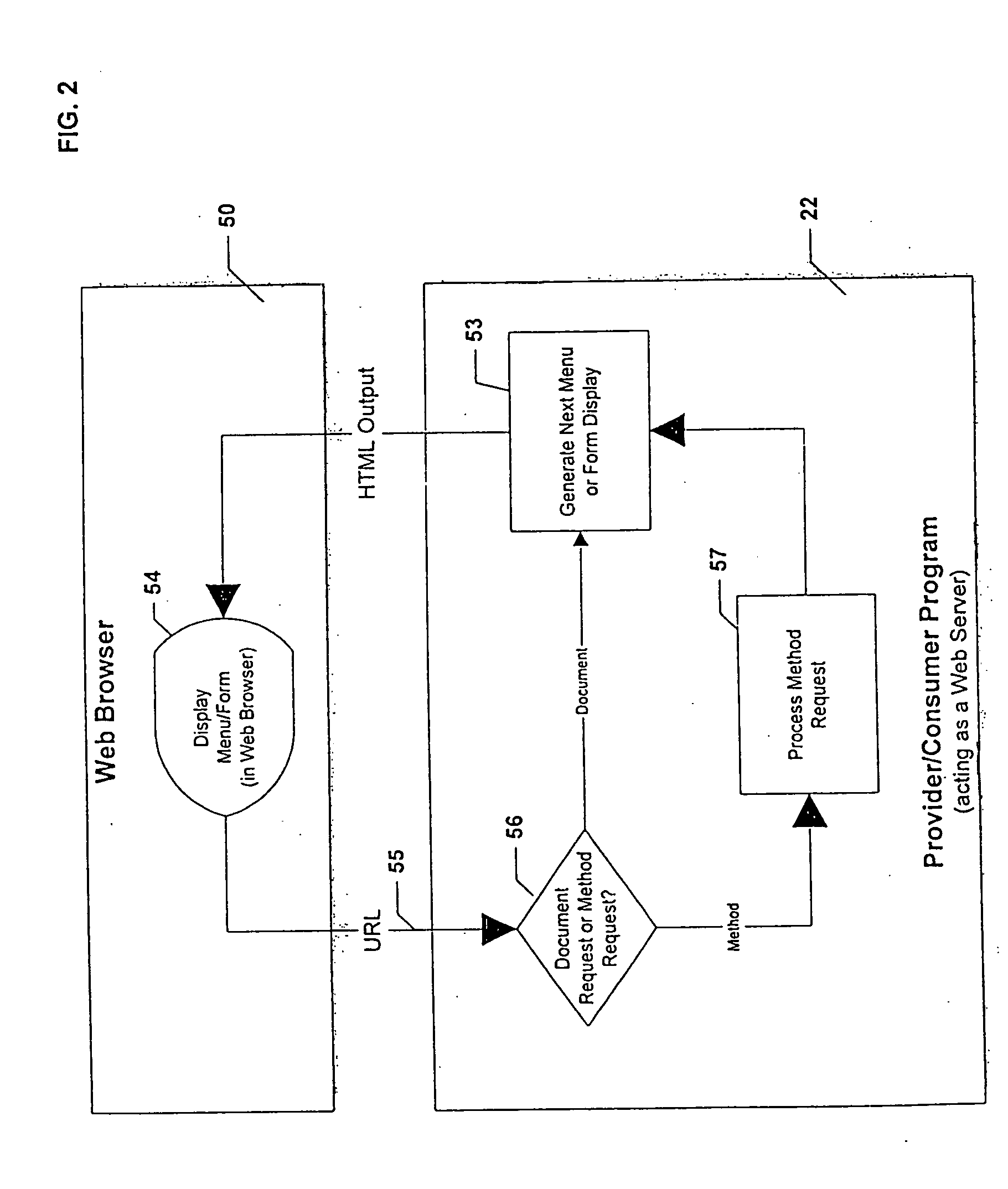Maintenance of this information requires significant human time involvement for receiving information, storing information, indexing information, searching for desired information, and retrieving information.
The human component of
record maintenance also creates a potential for error, which can cause the information to be faulty or to become lost.
For example, in a one-to-many relationship, particularly a
mass-market relationship such as a company and its customers, the problem is how to efficiently disseminate information about products and services to consumers.
However, knowing who needs what information, when, and how can be very difficult.
Because of this broad
dissemination by providers, consumers receive large amounts of information, much of which is irrelevant to them.
Information which is kept may not be immediately useful, but may be needed at a later time.
Unless the
consumer expends a great deal of work to store, catalog, and index this information, the information can be difficult or impossible to find when the
consumer actually needs it.
This same problem of efficient information distribution is exacerbated in many-to-many communications relationships, such as among the members of a
workgroup.
Thus the universal problem of “phone-tag”, when both parties exchange numerous messages trying to coordinate the opportunity to communicate in real time.
All of these information transfers require human involvement and thus create the potential for data errors.
However, the lack of a standard
communications system for exchanging common data means that providers adopt largely proprietary systems, increasing the investment necessary for every provider.
All three of these common, everyday communications relationship operations involve considerable effort on the part of the provider and consumers to carry out.
However, the links to the information source are neither dynamic nor persistent; in the sense that they do not provide new or updated information once the
consumer has found a topic of interest.
However, if the
web page referenced by the bookmark is removed, the bookmark is no longer valid.
However, Smart Bookmarks' capability is limited to single text strings on single web pages.
Smart Bookmarks does not provide a way for the consumer to filter the update messages, nor does it provide the consumer with any mechanism for exchanging structured information or managing a communications relationship with the provider.
They do not store or index information from the provider, nor do they provide a mechanism for the consumer and provider to automate other types of structured data exchanges or manage a communications relationship.
In addition, these navigator programs are specifically designed to work with the architecture and communications protocols of the online service, and cannot be easily adapted to other data communications networks, thus preventing other providers from using the functionality of the online service to create and distribute data in the same manner.
This last
disadvantage also applies to online navigation programs designed to work with
the Internet and other non-proprietary public data networks.
The lack of a common
frame of reference also severely limits the capability of either the provider or consumer to automatically process the contents of an e-mail message, or to automatically respond to the message besides the capability to automatically address a reply message.
In other words, they do not provide a means for the consumer to control or filter messages from different providers.
Forms also do not provide the consumer with a mechanism for automatically storing, indexing, or
processing information from the provider.
They do not provide a generalized means for each provider on the
system to establish and update their own frames of reference with one or more consumers, nor a generalized means for each consumer to coordinate the frames of reference they have with different providers.
Furthermore, Telescript does not provide a
specific model for the filtering, storage, and indexing of communications between a provider and consumer via agents.
Lastly, agent architectures require the addition of servers running agent interpreters to the communications network in order to operate, increasing the expense and complexity of the network.
Other than communicating the consumer's topic preferences back to the provider, however, delivery agents do not provide a way to control or process other communications between the consumer and provider.
In addition, since each delivery agent is typically designed as a separate
executable program which must be installed and run separately, the consumer is limited as to the number of delivery agents the consumer can manage and run.
While suitable for
information sharing amongst the members of a group, this architecture is not well suited for automating communications relationships among a large number of
information providers and consumers.
This enormous number of subject databases would then need to be replicated among the large number of servers required to service the complete
population of the
system, which would quickly overwhelm the capacity of the servers or network to
handle replication.
However, each
server would now have to manage replication for a large number of external consumers as well as internal group members.
There is no easy way to distribute this replication load to the consumer's computer.
Second, subject databases do not allow the consumer to control and filter the incoming communications from providers.
Third, because notification of new information is handled via a separate application, e-mail, the consumer is forced to coordinate notification and data storage / response among two communications systems.
Fourth, since subject databases are replicated from the servers, they do not give consumers an easy way to copy or transfer them to other consumers.
 Login to View More
Login to View More  Login to View More
Login to View More 


